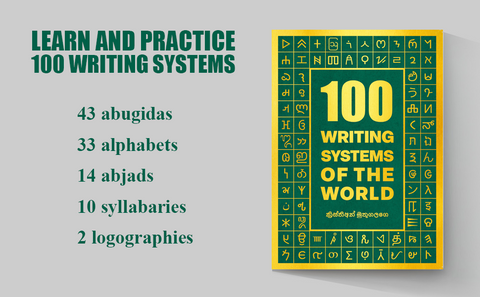Unveiling the Mystique of the Mandaic Script: A Glimpse into an Ancient World

Script type: The Mandaic script is an abjad, a writing system that primarily represents consonants. It lacks symbols for vowels, and vowel sounds are inferred based on context.
Writing direction: Mandaic is written from right to left, following the traditional direction of scripts in the Semitic family.
Creator and invention time: The Mandaic script is deeply rooted in the religious and cultural traditions of the Mandaean people, followers of Mandaeism, an ancient Gnostic religion. The exact creator and invention time of the script are uncertain, but it is believed to have evolved from the Aramaic script around the 2nd century CE.
Time period of use: The Mandaic script has a long and storied history, dating back to the early centuries CE. It was used extensively for religious texts and rituals among the Mandaean community.
Population and current usage: Today, the number of Mandaean people actively using the Mandaic script is relatively small, estimated to be around 60,000 to 70,000 individuals worldwide. The majority of Mandaean communities can be found in Iraq and Iran, with smaller diaspora communities in other parts of the world.
Usage area: Geographically, the Mandaic script has been used primarily in the regions where the Mandaean people have historically resided, including Southern Iraq, Khuzestan province in Iran, and parts of Syria.
Languages associated with the script: The Mandaic script is exclusively associated with the Mandaic language, a unique and ancient Aramaic dialect used in Mandaean religious texts and rituals. The Mandaic language and script hold deep religious significance for the Mandaeans, as they are the means through which their religious traditions and knowledge are preserved.
Interesting Facts:
- Hidden Wisdom: The Mandaic script contains sacred knowledge and teachings of Mandaeism, an esoteric religion with an intricate cosmology and a strong emphasis on divine knowledge and spiritual enlightenment.
- Script and Ritual: The Mandaic script is intricately tied to religious rituals and ceremonies, and it plays a central role in the Mandaeans' worship practices, especially during baptismal and funerary rituals.
- Calligraphic Beauty: The script is renowned for its ornate and graceful calligraphy, which enhances the spiritual experience during religious ceremonies and adds to the script's artistic value.
- Threat of Extinction: The Mandaic script and language are considered endangered due to the challenges faced by the Mandaean community, including persecution, conflicts, and emigration.
- Efforts for Preservation: Scholars and linguists have been working to document and preserve the Mandaic script and language, recognizing its significance as a repository of ancient religious wisdom and cultural heritage.
The Mandaic script stands as a poignant reminder of the rich spiritual and cultural heritage of the Mandaeans, a community that has endured countless challenges throughout history. As we explore the enigmatic world of the Mandaic script, we gain insights into an ancient religion and its profound impact on the lives of its followers. The script's unique calligraphy and religious significance make it not only a mode of communication but also a testament to the resilience and determination of a people to preserve their sacred knowledge and traditions in an ever-changing world. The Mandaic script's beauty and mystique continue to captivate scholars and enthusiasts, reminding us of the depth and diversity of human culture and expression.

Practice Mandaic and other scripts with our book "100 Writing Systems of the World"!
Discover 100 diverse writing systems from around the globe in one captivating book. Practice writing different scripts with full character charts and essential information provided. Let your imagination soar on the blank right pages as you explore 43 abugidas, 33 alphabets, 14 abjads, 10 syllabaries, and 2 logographic scripts. Dive into numeral systems and even design your own writing system. Immerse yourself in the beauty and diversity of global scripts today with "100 Writing Systems of the World." Unleash your creativity and order now!